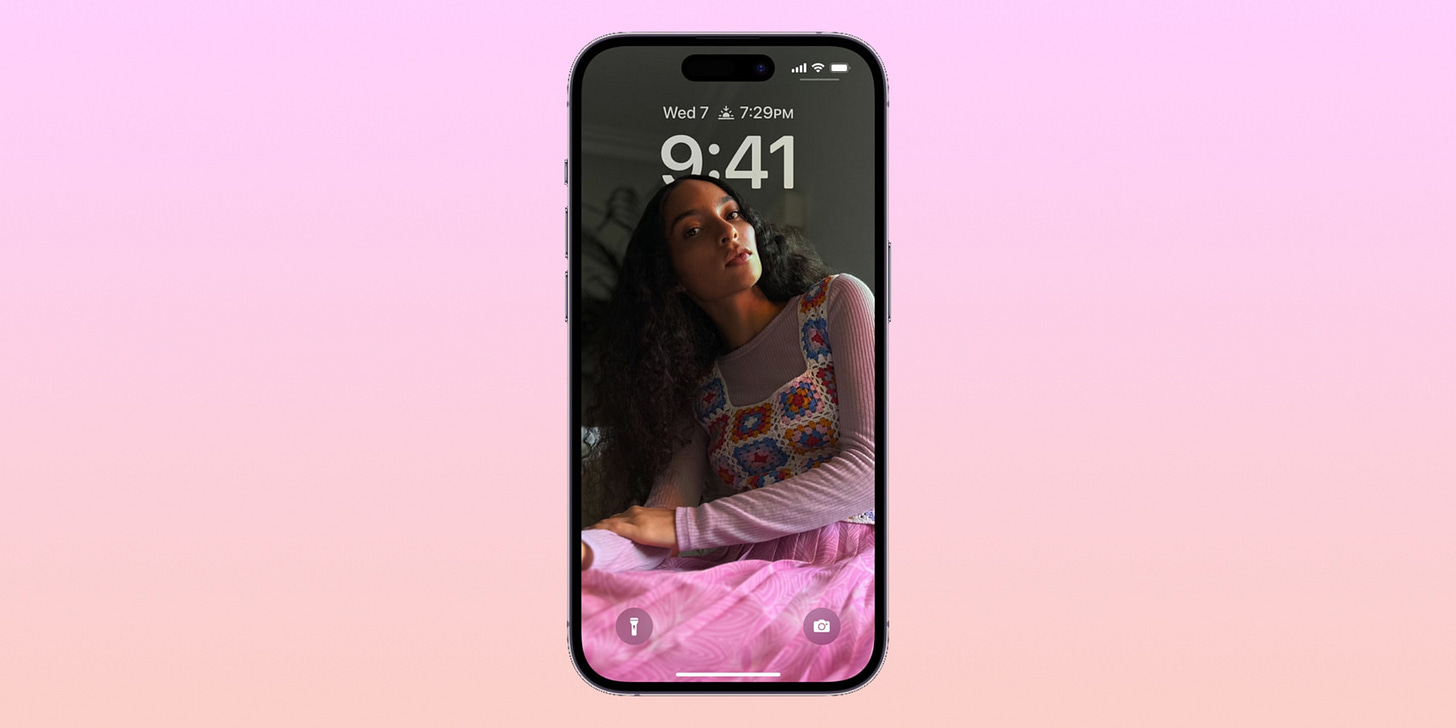iPhone 14 Pro Review: Six Months Later
Is the Dynamic Island a game-changer worth $999, or just a gimmick?
Apple often makes a noticeable, visual change between every iPhone generation.
If nothing else, buyers and onlookers can distinguish different iPhone model years by their physical appearance. It gives each iPhone the feeling of being new, even if it is largely unchanged from the previous model. This year, Apple did just that with the Dynamic Island on the iPhone 14 Pro.
It’s a user-interface change that naturally incorporates the front-facing camera cutout into the operating system rather than ignores its existence.
The Dynamic Island was added to the iPhone with the release of the iPhone 14 Pro and iPhone 14 Pro Max. While the iPhone 14 and 14 Plus look virtually identical to their predecessors, the iPhone 14 Pro series switches up the iPhone's display for the first time since 2018.
Apple also reduced the size of the Face ID sensors in the iPhone, allowing them to shrink the notch into a pill. But part of the reason Dynamic Island works is because the pill-shaped cutout on the iPhone 14 Pro isn't a pill.
Instead, the hardware comprises a smaller pill-shaped cutout and a hole punch cutout, forming a horizontal 'i' in the display. Each pixel can be turned off individually with OLED displays, resulting in deeper blacks. As a result, Apple can shut off the display area between the two cutouts to create a uniform look — and provide added functionality in the space between.
The Dynamic Island takes up more space on the iPhone's display than the outgoing notch.
That means that although Dynamic Island is more engaging to the user than the notch found on most recent iPhones, it will obstruct more of the user's content.
Apple has made the iPhone 14 Pro taller in an attempt to compensate for the intrusiveness of the Dynamic Island. The iPhone 14 Pro comes in at 5.81-inches in height, compared to 5.78-inches on the iPhone 13 Pro.
Beyond the Dynamic Island, the iPhone 14 Pro’s display is twice as bright as its predecessor and has always-on capabilities. Its 2,000-nit peak brightness rating makes it the brightest smartphone ever, and the device’s ProMotion display can refresh as slow as once per second.
That allows the iPhone to keep the lock screen always on without hindering battery life.
iPhone 14 Pro offers the first major update to the iPhone's main camera sensor in years, but that comes at a cost — a large and cumbersome camera bump.
It has a 48-megapixel main shooter paired with ultra-wide and telephoto secondary sensors. That provides crisp photos and up to 2x optical zoom. You can get closer by using digital zoom, which is clear between 3x-5x. Any more than that and photos will look blurry or grainy.
Apple lists the depth of both the iPhone 14 Pro and the iPhone 14 Pro Max at 0.31 inch, or 7.85 millimeters. For perspective, the iPhone 14 Pro is as thick as a stack of seven quarters. That's pretty thin, but this year's flagship iPhones are slightly thicker than last generation's iPhone 13 Pro and iPhone 13 Pro Max.
The reason for the increase in thickness isn't a bigger chassis or a larger battery. Instead, it's a larger camera system. Apple has pushed the limits with the iPhone's camera bump for years, and its new iPhone 14 Pro camera system is the thickest to date. It also takes up more space on the back of an iPhone — the iPhone 14 Pro's camera bump is a 1.5-inch square.
Apple doesn't provide information on the size of the camera bump specifically, but it looks to be about the thickness of two quarters. The significant disparity between the camera bump and the main chassis leaves the iPhone unbalanced and wobbly when placed flat on a surface.
Due to the lenses protruding from the main body of the smartphone, there is an increased risk of damage to the camera system. The three lenses are likely to be the first point of impact when the phone is dropped on its back, which could lead to cracking.



Apple doesn't offer a lot of details about the iPhone 14 Pro's battery life.
The company says it can complete 23 hours of video playback and 75 hours of audio playback on a single charge, but neither of those figures represent daily use. It has a capacity of 3,200 mAh, which is slightly more than last year's iPhone 13 Pro.
In real-world testing, the iPhone 14 Pro averaged about six-and-a-half hours of screen-on time over a 10-day period. Screen-on time is a metric as simple as it sounds, and quantifies how long a phone has actually been used. This includes browsing social media or the web, watching videos or sending messages.
Power-users will find that they need to charge their battery around midday to keep the phone alive, but the average user will likely be satisfied with the iPhone 14 Pro's battery life.
Performance is improved as well, thanks to the inclusion of Apple's A16 Bionic chip. It has a six-core CPU and a five-core GPU, the latter of which Apple says has 50% more memory bandwidth. In simple terms: the iPhone 14 Pro has all the power needed to be as smooth and speedy as any smartphone on the market.
Whether or not the Dynamic Island is a gimmick or game-changer, the iPhone 14 Pro makes a compelling argument that it's time to upgrade. It has a better display and camera, provides faster performance and has a slightly longer battery life. But it's only worth the jump for some users.
People who are still using an iPhone X or XS (released in 2017 and 2018, respectively) will certainly feel the difference between their current devices and the new 14 Pro. iPhone 11 and 12-series owners will still feel the changes, but on a lesser scale. In most ways, iPhone 13 Pro users won't find much of a difference between their current device and the new 14 Pro.
Starting at $999, the iPhone 14 Pro comes at a hefty price tag, but people still carrying older devices can appreciate the additions to Apple's latest "Pro" smartphone.








